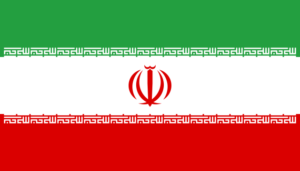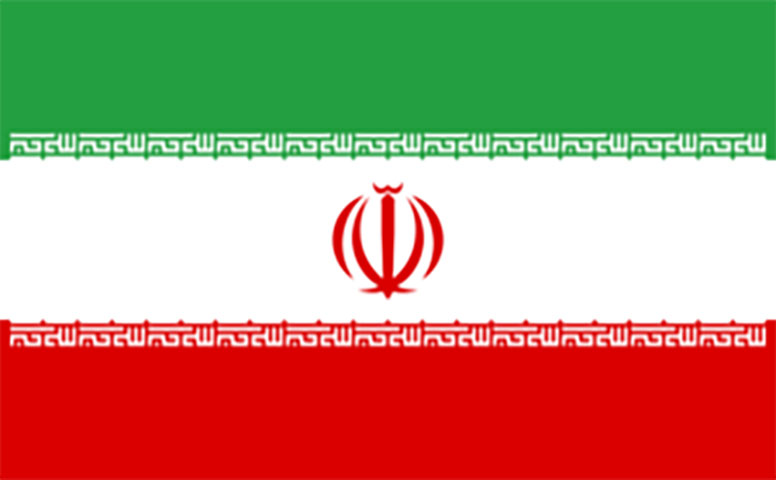04 January 2018
Unrest in Iran
1979, 2009… 2018.
By Neil Tidmarsh
 The news from Iran last Thursday – that women are no longer obliged by law to cover their hair in public – was surprising enough. But what has followed is even more surprising.
The news from Iran last Thursday – that women are no longer obliged by law to cover their hair in public – was surprising enough. But what has followed is even more surprising.
At first, it looked as if the measure abandoning the headscarf was simply an attempt by Iran to keep up with its rival, Saudi Arabia. These two mutual enemies have been vying for regional supremacy via politics, ideology and military action; now it looked as if they were competing in social reform as well, as unlikely as that may be. “OK, Crown Prince bin Salman” the ayatollahs seemed to be saying, “so you’re allowing women to drive cars now, are you? Huh, that’s nothing. We’re allowing them to uncover their hair! Beat that!”
But the hindsight of the last six days puts a different complexion on the matter, of course. Now the measure looks exactly like the kind of sop that over-powerful authorities give to a repressed but increasingly restive populace as a safety valve to relieve growing pressure for change and reform. If that’s the case, then it’s been a serious miscalculation, as such gestures often are. Many a despotic and reactionary government in the nineteenth century came to regret relaxing its grip and making concessions to reformist demands, only to find such gestures opening the floodgates to popular revolution.
What exactly is happening in Iran? It’s difficult to say. After all, Iran is an enclosed, pariah state where even the accusation of training journalists – let alone actually working as a journalist – is highly dangerous, as we know from recent headlines. None of the Western journalists reporting on the crisis appears to be in Iran itself. So official government organs and unofficial mobile phone footage remain the only sources of information at the moment. But even political and judicial officials are admitting that violent protest is widespread across the country, with at least twenty-two people dead and more than five hundred people arrested. What began among the poorer populace in a few provincial cities as a protest against rocketing food prices has escalated through violent anger against unemployment, poverty, repression, inflation and corruption into something more politically-motivated and more socially and geographically widespread. There are stories of police-stations being attacked by armed rioters, and the authorities have closed down various social media platforms in an attempt to cut off the protesters’ means of communication.
All this is surprising for a number of reasons. After all, it’s only a year or so since reports here in the West were saying that the Iranian populace in general and the younger generation in particular were more than satisfied with their lot and were unlikely to rebel. And since then, of course, the deal freezing the country’s nuclear weapons programme has led to the lifting of sanctions, allowing it to sell its oil abroad again – so surely Iranians have become much richer, not poorer?
But perhaps we shouldn’t be surprised at all. Those reports about the happy populace came out in the immediate aftermath of the nuclear deal, after all, so now one cynically wonders if their purpose was simply to sell the deal to a not wholly convinced world – “a popular uprising is unlikely, so a diplomatic entente with the more ‘reformist’ elements in the government is the only way to encourage a less hostile regime…”. And, equally cynically, one can believe that the proceeds of renewed oil sales and other benefits from the lifting of sanctions are unlikely to reach the general population, and more likely to be creamed off by corrupt elements in the country’s political, religious and military elites, or diverted into funding the many and various armed conflicts in which Iran is engaged elsewhere in the region.
Indeed, considering those armed conflicts, it’s a wonder that Iran isn’t completely bankrupt. It supports the Assad regime in the Syrian civil war, the Houthi rebels (allegedly) in the Yemen civil war and the Hezbollah terror group and other Shia militias throughout the region. The cost of these conflicts must be overwhelming. Even Saudi Arabia – Iran’s main opponent in these wars – is finding it to be crippling; Saudi’s immense and unimaginable wealth is evaporating on these battlefields like water in the desert; it’s having to introduce taxes for the first time, sell off some of the state oil assets, open the door to women in the workplace and diversify its economy – normal actions in the rest of the world, but drastic and revolutionary in the desert kingdom.
The Iranian authorities are blaming foreign interference for the unrest. “Our enemies use money, arms and spies to unsettle our country” said Ayatollah Ali Khamenei a few days ago. “The enemy is always looking for an opportunity and any crevice to strike the Iranian nation.” This is predictable. Of course an enclosed, ostracised state will always be inclined to paranoia and disinclined to blame itself. But Persia did suffer more than most from foreign interference – covert and overt – in the previous century, until the overthrow of the Shah in the revolution of 1979. Israel has denied any involvement in the current crisis. But what about Saudi Arabia?
Apparently encouraged by the Trump administration, Saudi Arabia and its Gulf allies launched a grand anti-Iran strategy last year. Its tactics have apparently involved fingers in various pies in the region: in Qatar (the alienation of this allegedly pro-Iranian state); in the Lebanon (its prime minister was allegedly forced to resign as a public protest against growing Iranian influence); in Palestine (its president was allegedly given the ultimatum of accepting the US peace deal or resigning); and in Yemen (ex-president Saleh was allegedly encouraged to change sides in the civil war and abandon his pro-Iranian Houthi allies). Most of these tactics seem to have failed: Qatar is refusing to come to heel, the Lebanese prime minister withdrew his resignation as soon as he returned to his own country, the Palestinian president remains in office in spite of rumours that he has rejected the peace plan, and Saleh was beaten to the draw by the Houthis before he could abandon them. But is the uprising in Iran proof that Riyadh has at last pulled off a tactical success abroad to match its successes in reform at home?
It’s difficult to predict what might happen now. Iran’s elite Revolutionary Guard has just announced that it’s taking control of security in the capital, Tehran. Will they crush this uprising as ruthlessly as they crushed the Green revolution in 2009, when young middle-class students rose up in protest against disputed election results? Will ‘reformist’ elements in the regime, led by President Rouhani, manage to defuse the situation with concessions? Will ‘hardline’ elements in the regime use the crisis to sweep aside Rouhani and his followers? Is the uprising in fact opposed to the ‘reformers’ in the government rather than sympathetic to them? (After all, it seems to have been provoked by President Rouhani’s austerity measures). Is there indeed anything reformist about the so-called ‘reformist’ elements in Iran’s government, or are they in fact all hard-line? Will the uprising triumph, sweeping all before it, overturning a repressive theocracy and replacing it with… what? A free and secular democracy? Or is Iran about to be plunged into a civil war as devastating and complex as Syria’s?
The only certainty is that Kim Jong-un – at the head of another oppressive regime with an unpredictable nuclear-weapons programme and an impoverished populace in an alienated country – will be even more troubled by these questions than the rest of us.


